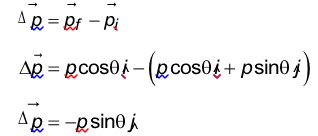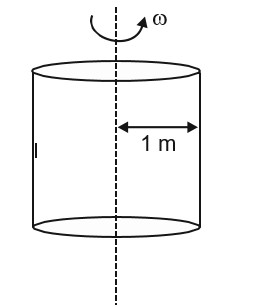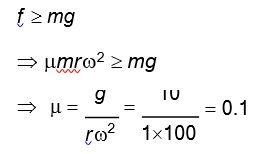An inverted cone is rotating about its vertical axis. A particle is kept on the inner surface of cone and it is at rest relative to the cone at a height of 0.4 m above its vertex. The coefficient of friction between the surface of cone and the particle is 0.6 and the apex angle of cone is 90°. The maximum angular velocity of revolution of the cone can be: (take g = 10/s2)
An inverted cone is rotating about its vertical axis. A particle is kept on the inner surface of cone and it is at rest relative to the cone at a height of 0.4 m above its vertex. The coefficient of friction between the surface of cone and the particle is 0.6 and the apex angle of cone is 90°. The maximum angular velocity of revolution of the cone can be: (take g = 10/s2)
Option 1 -
12.5rad/s
Option 2 -
10rad/s
Option 3 -
7.5rad/s
Option 4 -
5rad/s
-
1 Answer
-
Correct Option - 2
Detailed Solution:N = (mg/√2) + (mω²h/√2)
(mω²h/√2) = (mg/√2) + f?
(mω²h/√2) = (mg/√2) + μ (mg/√2) + (mω²h/√2)
ω = √ (g/h) (1+μ)/ (1-μ) = 10rad/s
Similar Questions for you
T1 = m (g + a)
T2 = m (g - a)
Apparent weight = mg – ma
Taking an Exam? Selecting a College?
Get authentic answers from experts, students and alumni that you won't find anywhere else
Sign Up on ShikshaOn Shiksha, get access to
- 65k Colleges
- 1.2k Exams
- 679k Reviews
- 1800k Answers




